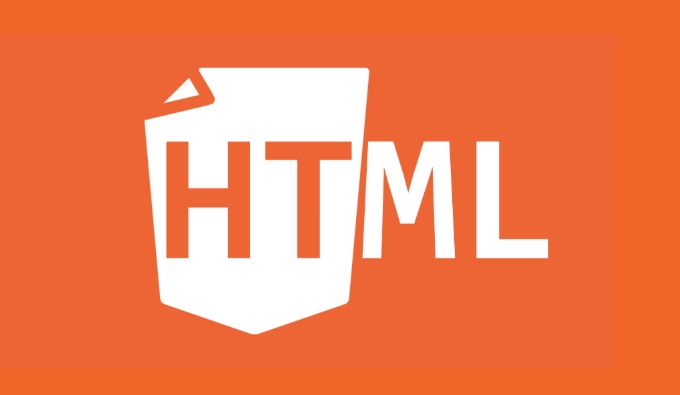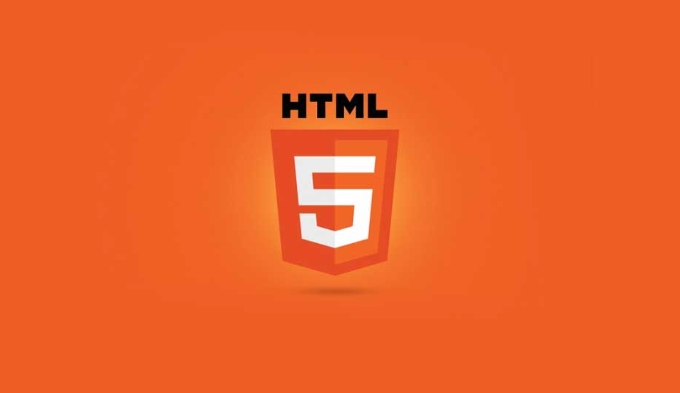It is actually very simple to write inline styles using HTML's style attribute. Just add style="..." to the tag and then write CSS rules in it. 1. The basic writing method is a CSS style with the attribute value in the form of a string. Each style is separated by a semicolon. The format is the attribute name: attribute value, for example:
This paragraph of text is red. Note that the entire style string should be wrapped in double quotes. A semicolon should be added after each CSS attribute. The attribute name is standard writing method of CSS; 2. Applicable scenarios for inline styles include dynamic style control, email template development and rapid debugging. For example, if the picture is displayed in the center, you can write it as  ; 3. Several pitfalls that need to be avoided include high priority but difficult to maintain, many code repetitions, and special character escape problems. Common errors include the camel of the attribute name, forgetting to add colons or using Chinese punctuation; 4. Compared with class, the style attributes have poor maintenance, low reusability, and convenient dynamic control, while the class CSS file has good maintenance, high reusability, and slightly complex dynamic control. Therefore, unless there is a clear reason, try to use style as little as possible, but use class to manage styles through class. Mastering the correct way to use can help you save a lot of trouble when the right time.
; 3. Several pitfalls that need to be avoided include high priority but difficult to maintain, many code repetitions, and special character escape problems. Common errors include the camel of the attribute name, forgetting to add colons or using Chinese punctuation; 4. Compared with class, the style attributes have poor maintenance, low reusability, and convenient dynamic control, while the class CSS file has good maintenance, high reusability, and slightly complex dynamic control. Therefore, unless there is a clear reason, try to use style as little as possible, but use class to manage styles through class. Mastering the correct way to use can help you save a lot of trouble when the right time.

Directly answer the title question:
Want to write inline styles using HTML's style attribute? In fact, it is very simple. Just add style="..." to the tag and then write CSS rules in it. However, how to write it easily and without making any mistakes, there are still some details to pay attention to.

1. Basic writing method: attribute value is a CSS style string
The HTML style attribute accepts a string CSS style rule. Each style is separated by a semicolon, and the format is屬性名: 屬性值. For example:

<p style="max-width:90%">This paragraph is red</p>
- Note that you should wrap the entire style string in double quotes.
- Each CSS attribute needs to be followed by a semicolon (although the last one can be omitted, it is recommended to add consistency).
- Property names are written in CSS, such as
font-sizeinstead of camel or underscore.
2. Applicable scenarios for inline styles
Although it is now recommended to write styles in external CSS files, style attribute also has its use:
- Dynamic style control : It is very convenient to directly modify the style of an element with JavaScript.
- Mail template development : Many email clients have limited support for CSS, and the inline style is more stable.
- Quick debugging : Temporarily test a certain style effect, and do not want to move external files.
For example, if you just want a certain image to be displayed in the center and don’t want to add a class to it, you can write it like this:
<img src="/static/imghw/default1.png" data-src="photo.jpg" class="lazy" style="max-width:90%" alt="How to use the style html attributes for inline CSS?" >
3. Several pitfalls to avoid
Although convenient, style attribute also has some usage restrictions and common errors:
- High priority but difficult to maintain : because the priority of inline styles is higher than that of most CSS, it is easy to overwrite other styles, and it is troublesome to modify later.
- The code is repeated many times : if multiple elements require the same style, each of them will lose its reusability.
- Pay attention to special character escape : If you use JavaScript to dynamically generate style strings, remember to process spaces, quotes, etc.
Some common error examples:
<!-- Error: The attribute name is written as camel--> <div style="fontSize: 20px;"></div> <!-- Error: Forgot to add a colon --> <div style="color red;"></div> <!-- Error: Chinese punctuation was used--> <div style="color:red;"></div>
4. A simple comparison with class
| characteristic | style attributes | class CSS file |
|---|---|---|
| Maintenance | Difference | good |
| Reusability | Low | high |
| Dynamic control | Convenient | A little more complicated |
| Loading performance | Does not affect CSS files | Possible increase in requests |
So unless there is a clear reason, try to use style as little as possible, and instead manage styles through class.
Basically that's it. Inline styles are not complicated, but they are easily abused or ignored in actual projects. Mastering the correct way to use can help you save a lot of trouble when the right time.
The above is the detailed content of How to use the style html attributes for inline CSS?. For more information, please follow other related articles on the PHP Chinese website!

Hot AI Tools

Undress AI Tool
Undress images for free

Undresser.AI Undress
AI-powered app for creating realistic nude photos

AI Clothes Remover
Online AI tool for removing clothes from photos.

Clothoff.io
AI clothes remover

Video Face Swap
Swap faces in any video effortlessly with our completely free AI face swap tool!

Hot Article

Hot Tools

Notepad++7.3.1
Easy-to-use and free code editor

SublimeText3 Chinese version
Chinese version, very easy to use

Zend Studio 13.0.1
Powerful PHP integrated development environment

Dreamweaver CS6
Visual web development tools

SublimeText3 Mac version
God-level code editing software (SublimeText3)

Hot Topics
 Explain the purpose of the role attribute in ARIA.
Jun 14, 2025 am 12:35 AM
Explain the purpose of the role attribute in ARIA.
Jun 14, 2025 am 12:35 AM
ARIA's role attribute is used to define the role of web elements and improve accessibility. 1. Role attribute helps assistive technology to understand the functions of elements, such as buttons, navigation, etc. 2. Use role attributes to assign specific roles to non-semantic HTML elements. 3. The role attribute should be consistent with the element behavior and be verified by the accessibility tool test.
 HTML and Design: Creating the Visual Layout of Websites
Jun 14, 2025 am 12:39 AM
HTML and Design: Creating the Visual Layout of Websites
Jun 14, 2025 am 12:39 AM
How to create a website layout? 1. Use HTML tags to define the content structure, such as, ,. 2. Control styles and positions through CSS, using box model, float or Flexbox layout. 3. Optimize performance, reduce HTTP requests, use cache and optimize images, and ensure responsive design.
 How can you ensure your HTML code is readable and maintainable?
Jun 10, 2025 am 12:06 AM
How can you ensure your HTML code is readable and maintainable?
Jun 10, 2025 am 12:06 AM
Improve the readability and maintainability of HTML code can be achieved through the following steps: 1. Use semantic tags, such as, etc. to make the code structure clear and improve SEO effect; 2. Keep the code formatted and use consistent indentation and spaces; 3. Add appropriate comments to explain the code intention; 4. Avoid excessive nesting and simplify the structure; 5. Use external style sheets and scripts to keep the HTML concise.
 How do I stay up-to-date with the latest HTML standards and best practices?
Jun 20, 2025 am 08:33 AM
How do I stay up-to-date with the latest HTML standards and best practices?
Jun 20, 2025 am 08:33 AM
The key to keep up with HTML standards and best practices is to do it intentionally rather than follow it blindly. First, follow the summary or update logs of official sources such as WHATWG and W3C, understand new tags (such as) and attributes, and use them as references to solve difficult problems; second, subscribe to trusted web development newsletters and blogs, spend 10-15 minutes a week to browse updates, focus on actual use cases rather than just collecting articles; second, use developer tools and linters such as HTMLHint to optimize the code structure through instant feedback; finally, interact with the developer community, share experiences and learn other people's practical skills, so as to continuously improve HTML skills.
 How do I use the element to represent the main content of a document?
Jun 19, 2025 pm 11:09 PM
How do I use the element to represent the main content of a document?
Jun 19, 2025 pm 11:09 PM
The reason for using tags is to improve the semantic structure and accessibility of web pages, make it easier for screen readers and search engines to understand page content, and allow users to quickly jump to core content. Here are the key points: 1. Each page should contain only one element; 2. It should not include content that is repeated across pages (such as sidebars or footers); 3. It can be used in conjunction with ARIA properties to enhance accessibility. Usually located after and before, it is used to wrap unique page content, such as articles, forms or product details, and should be avoided in, or in; to improve accessibility, aria-labeledby or aria-label can be used to clearly identify parts.
 How do I create a basic HTML document?
Jun 19, 2025 pm 11:01 PM
How do I create a basic HTML document?
Jun 19, 2025 pm 11:01 PM
To create a basic HTML document, you first need to understand its basic structure and write code in a standard format. 1. Use the declaration document type at the beginning; 2. Use the tag to wrap the entire content; 3. Include and two main parts in it, which are used to store metadata such as titles, style sheet links, etc., and include user-visible content such as titles, paragraphs, pictures and links; 4. Save the file in .html format and open the viewing effect in the browser; 5. Then you can gradually add more elements to enrich the page content. Follow these steps to quickly build a basic web page.
 How do I create checkboxes in HTML using the element?
Jun 19, 2025 pm 11:41 PM
How do I create checkboxes in HTML using the element?
Jun 19, 2025 pm 11:41 PM
To create an HTML checkbox, use the type attribute to set the element of the checkbox. 1. The basic structure includes id, name and label tags to ensure that clicking text can switch options; 2. Multiple related check boxes should use the same name but different values, and wrap them with fieldset to improve accessibility; 3. Hide native controls when customizing styles and use CSS to design alternative elements while maintaining the complete functions; 4. Ensure availability, pair labels, support keyboard navigation, and avoid relying on only visual prompts. The above steps can help developers correctly implement checkbox components that have both functional and aesthetics.
 What is an HTML tag?
Jun 13, 2025 am 12:36 AM
What is an HTML tag?
Jun 13, 2025 am 12:36 AM
HTMLtagsareessentialforstructuringwebpages.Theydefinecontentandlayoutusinganglebrackets,ofteninpairslikeand,withsomebeingself-closinglike.HTMLtagsarecrucialforcreatingstructured,accessible,andSEO-friendlywebpages.







